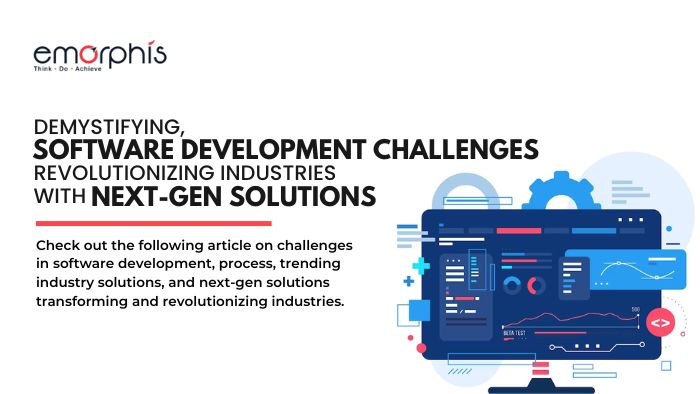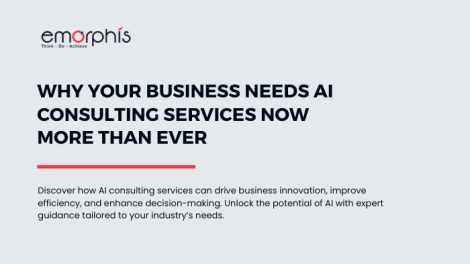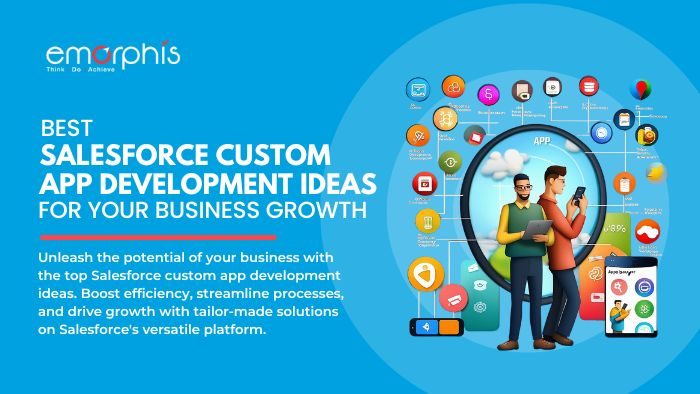Overview
If you're involved in the world of software development or have a keen interest in it, you should definitely check out the following article on challenges in software development, process, trending industry solutions, and next-gen solutions you should be ready for. This informative and insightful piece offers valuable insights into the various hurdles and obstacles faced by software developers throughout their projects. From technical challenges like debugging and optimizing code to broader issues such as project management and communication, the article covers a wide range of topics relevant to software development.
Whether you're a seasoned developer looking to enhance your skills or a beginner seeking to grasp the intricacies of software development, this article is a must-read resource.
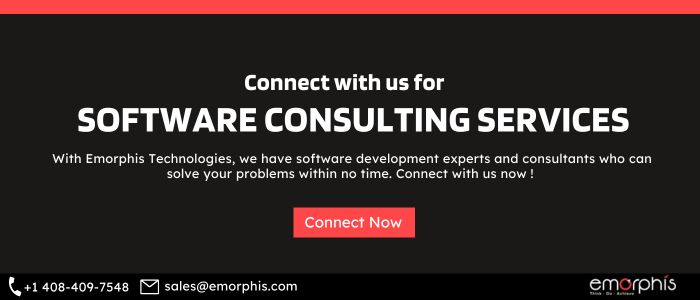
Software Development Challenges
Software product engineering is a complex and challenging process that involves various hurdles and obstacles. Here are some common
challenges in software development:
1. Requirements Management
Gathering and managing requirements can be categorized as software development challenges, especially when dealing with changing client needs or unclear specifications. Ensuring proper communication and documentation of requirements is essential to avoid misunderstandings and also scope creep.
2. Project Management
Effectively managing software projects involves coordinating tasks, timelines, and resources. Challenges may arise from poor planning, unrealistic deadlines, scope changes, also inadequate communication among team members.
3. Technology Selection
Choosing the right technologies, frameworks, and platforms can be one of the major challenges in software development, as there are numerous options available. In fact, selecting appropriate tools based on project requirements, product scalability, performance, and maintainability is crucial in software product engineering services.
4. Quality Assurance and Testing
Ensuring software quality through comprehensive testing is a significant challenge. Implementing effective testing strategies, including unit testing, integration testing, and user acceptance testing, can help identify and fix bugs, but it requires time and effort.
5. Security
Developing secure software is critical, especially with the increasing frequency of cyberattacks. Addressing such challenges in software development, and potential vulnerabilities, implementing secure coding practices, and staying updated with the latest security measures are continuous challenges.
6. Scalability and Performance
Building software that can handle increasing user loads and data volumes is crucial. Designing scalable architectures and optimizing performance can be one of the major challenges in software development, particularly when dealing with large-scale systems.
7. Collaboration and Communication
Effective collaboration among team members, stakeholders, and clients is essential for project success. Software development challenges can arise from miscommunication, cultural differences, conflicting priorities, or geographical dispersion.
8. Maintaining Code Quality
As software projects evolve, maintaining code quality becomes challenging. Code refactoring, adhering to coding standards, and minimizing technical debt are ongoing tasks that require constant attention.
9. Integration and Compatibility
Integrating software components, third-party libraries, or external systems can be challenging due to compatibility issues or dependency conflicts. Ensuring smooth integration and managing APIs effectively are key
challenges in software development.
10. Keeping up with Technology Trends
The field of software development evolves rapidly, and staying updated with the latest technologies, programming languages, frameworks, and best practices can be challenging. Continuous learning and professional development are necessary to keep pace with the industry.
While these challenges in software development may arise, effective project management, experienced team members, open communication, and adaptability can help overcome them and deliver successful software solutions.
Software Development Processes: Overcoming The Challenges
Software development challenges and the corresponding processes to address them are as per the following.

1. Requirements Management
Requirements management is crucial for successful software development. Here's a comprehensive process to manage requirements effectively and overcome one of the challenges in software development.
- Collaboration and Understanding: Engage in close collaboration with clients and stakeholders to understand their needs, objectives, and vision for the software solution. Also, gather comprehensive requirements through interviews, workshops, or surveys to ensure a thorough understanding of project needs.
- Requirements Documentation: Document requirements in a structured and organized manner. Use techniques such as user stories use cases, or functional requirements documents. In fact, clearly define and prioritize requirements to establish a common understanding among the development team.
- Requirements Validation: Validate requirements with stakeholders to ensure accuracy, completeness, and feasibility. Address any gaps or conflicts through open discussions and also feedback sessions.
- Change Management: Establish a change management process to handle evolving requirements. As a matter of fact, define protocols for requesting, reviewing, and approving requirement changes. Also regularly communicate changes to the development team and stakeholders to maintain alignment
- Communication and Collaboration: Maintain clear and open communication channels with clients and stakeholders throughout the development process. Provide regular updates on requirement progress, seek clarifications when needed, and conduct periodic requirement review meetings.
Tools Used in Requirements Management
- Requirements management tools like JIRA, Trello, or Azure DevOps help manage and track requirements, user stories, and tasks.
- Communication and collaboration tools such as Slack, Microsoft Teams, or Zoom facilitate effective communication and collaboration with clients and stakeholders.
2. Project Management
Effective project management is essential for delivering software projects on time and also within budget. Here's a comprehensive process for managing software development projects.
- Project Planning: Define project goals, scope, and deliverables in collaboration with stakeholders. In fact, break down the project into manageable tasks and create a detailed project plan. Determine timelines, milestones, and also dependencies.
- Resource Allocation: Allocate resources based on their expertise and availability. In fact, assign tasks to team members, considering their skills and workload. Also, optimize resource utilization while ensuring that team members have the necessary support and tools to perform their tasks.
- Progress Monitoring: Regularly track project progress against the defined plan. Use project management tools to monitor task completion, identify bottlenecks, and track overall progress. Also, conduct regular team meetings to discuss updates, challenges, and potential risks.
- Risk Management: Identify and assess potential risks that could impact project success. In fact, create a risk management plan with mitigation strategies. Also, monitor risks throughout the project and adapt the plan as needed.
- Communication and Collaboration: Establish clear communication channels with the team, stakeholders, and clients. In fact, conduct regular status meetings to provide updates, address concerns, and gather feedback. Foster effective collaboration and encourage transparency among team members.
- Change Control: Implement a change control process to manage scope changes effectively. Also, evaluate change requests, assess their impact on the project, and communicate the changes to relevant stakeholders. Track and document approved changes to maintain project integrity.
Tools Used in Project Management
- Popular project management tools include JIRA, Asana, Trello, or Microsoft Project for planning, task assignment, and progress tracking.
- Version control systems like Git, SVN, or Mercurial are widely used for managing source code versions and facilitating collaboration among developers.
3. Technology Selection
Choosing the right technologies, frameworks, and platforms is critical for building successful software solutions. Here's a comprehensive process for technology selection:
- Requirement Analysis: Conduct a thorough analysis of project requirements, considering factors such as scalability, performance, security, and compatibility. Understand the specific technical needs and constraints of the project.
- Research and Evaluation: Stay updated with the latest industry trends and emerging technologies. Research and evaluate available technologies, frameworks, and platforms that align with the project requirements. Consider factors such as community support, documentation, and future scalability.
- Proof of Concept (POC): Consider conducting a proof of concept to validate the feasibility of selected technologies. Develop a small-scale prototype or a sample module to test the chosen technologies and assess their suitability for the project.
- Technical Expertise: Consult with technical experts or a software development team with experience in the selected technologies. Leverage their expertise to assess the pros and cons of different options and make informed decisions.
- Consideration of Constraints: Evaluate any project constraints such as budget, time, or existing technology infrastructure. Ensure the selected technologies can be integrated seamlessly within these constraints.
- Documentation: Document the rationale behind technology selections, including the analysis, evaluation criteria, and justifications. This documentation will serve as a reference throughout the development process and aid in knowledge sharing.
Tools Used in Development and Technology Selection
- Depending on the project requirements, developers may use specific tools or technologies to create prototypes or proof of concepts by selecting appropriate technologies and frameworks.
4. Quality Assurance and Testing
Quality assurance and testing play a crucial role in delivering high-quality software solutions. Here's a comprehensive process for quality assurance and testing.
- Test Planning: Define a comprehensive testing strategy that aligns with project goals and requirements. Determine the types of testing required, such as functional testing, performance testing, security testing, or user acceptance testing.
- Test Documentation: Create detailed test plans, test cases, and test scripts to ensure comprehensive coverage of the software functionality. Also, document test objectives, steps, expected results, and any specific test data or environments required.
- Test Execution: Execute test cases based on the defined test plan and scripts. In fact, report and track test results, including identified bugs, issues, or deviations from expected results.
- Automated Testing: Identify opportunities for test automation and leverage appropriate testing tools and also frameworks. Automate repetitive and time-consuming test cases to improve efficiency and accuracy.
- Bug Tracking and Resolution: Implement a bug-tracking system to log and track identified issues. Also, assign appropriate priorities and severities to each bug and collaborate with the development team to ensure timely resolution.
- Regression Testing: Perform regression testing after bug fixes or software changes to ensure that existing functionality has not been impacted. Execute a subset of tests to verify the overall stability and integrity of the software.
- Continuous Improvement: Continuously assess and improve the testing process based on feedback and lessons learned. In fact, analyze test coverage, effectiveness, and efficiency to identify areas for improvement.
Tools Used in QA and Testing
- Testing frameworks like Selenium, JUnit, NUnit, or pytest are commonly used for automated functional and also regression testing.
- Performance testing tools like Apache JMeter, Gatling, or Locust help in load testing and also performance analysis.
- Bug tracking systems such as JIRA, Bugzilla, or Mantis facilitate the logging and tracking of identified issues.
5. Security
Addressing security concerns is crucial in today's digital landscape. Here's a comprehensive process to ensure software security.
- Security Assessment: Conduct a thorough security assessment of the software solution. Identify potential vulnerabilities, threats, and also risks that the system may face.
- Secure Coding Practices: Establish and enforce secure coding practices within the development team. In fact, promote adherence to industry standards, coding guidelines, and best practices for secure software development.
- Threat Modeling: Perform threat modeling to identify potential attack vectors and in fact, design appropriate security controls. Also consider factors such as authentication, authorization, encryption, input validation, and data protection.
- Security Testing: Perform comprehensive security testing to identify vulnerabilities and also weaknesses in the software. Conduct penetration testing, vulnerability scanning, and code reviews to detect and also address security flaws.
- Security Patching and Updates: Stay updated with the latest security patches and updates for all software components and also dependencies. In fact, continuously implement patches and updates to address known vulnerabilities, ensuring robust security measures.
- Security Documentation: Provide documentation and also guidelines on secure deployment, configuration, and maintenance of the software solution. Educate users and administrators about secure usage practices.
- Security Monitoring and Incident Response: Implement security monitoring mechanisms to detect and also respond to potential security incidents. In fact, develop a well-defined incident response plan to effectively handle security breaches and mitigate their impact.
Tools used in implementing, and enhancing security
- Security Scanning tools like SonarQube, OWASP ZAP, or Fortify perform static code analysis and also identify potential security vulnerabilities.
- Encryption and authentication libraries like OpenSSL, Bcrypt, or OAuth facilitate secure data transmission, encryption, and also user authentication.

6. Scalability and Performance
Designing software solutions that can handle increasing demands and provide optimal performance is crucial. Here's a comprehensive process for scalability and performance.
- Scalability Analysis: Analyze anticipated user loads, data volumes, and future growth expectations. Also, understand the scalability requirements of the software solution.
- Architecture Design: Design a scalable architecture that can handle increased loads. In fact, consider distributed systems, load balancing, caching mechanisms, and horizontal or vertical scaling options.
- Performance Optimization: Optimize code and database queries for improved performance. Identify and address performance bottlenecks through techniques such as code refactoring, caching, query optimization, or indexing.
- Performance Testing: Conduct performance testing to evaluate the software solution under different load scenarios. As a matter of fact, measure response times, throughput, and resource utilization. Identify and fix performance issues.
- Monitoring and Optimization: Implement monitoring tools to continuously monitor the software's performance in production. Analyze performance metrics and also logs to identify areas for optimization. Make necessary adjustments to enhance performance.
- Capacity Planning: Plan for future scalability by considering projected growth and system requirements. In fact, assess hardware and infrastructure needs to accommodate increased user loads and data volumes.
- Performance Tuning: Continuously monitor and fine-tune the system's performance based on real-time data and also user feedback. Proactively optimize the system to ensure optimal performance.
Tools used in scalability and performance
- Cloud services and cloud platforms like Amazon Web Services (AWS), Microsoft Azure, or Google Cloud provide scalability and performance options such as auto-scaling and load balancing.
- Caching mechanisms technologies like Redis or Memcached are used for caching frequently accessed data to improve performance.
7. Collaboration and Communication
Effective collaboration and communication foster a positive and productive development environment. Here's a comprehensive process for collaboration and communication.
- Communication Channels: Establish clear communication channels with clients, stakeholders, and the development team. In fact, use project management tools, instant messaging platforms, email, or video conferencing to facilitate regular communication.
- Regular Meetings: Conduct regular meetings to provide updates, discuss project progress, address concerns, and also gather feedback. Schedule team meetings, client meetings, and stakeholder meetings as needed.
- Transparent Documentation: Maintain clear and accessible documentation of project requirements, design decisions, meeting minutes, and also progress reports. In fact, use collaboration tools or shared document repositories for easy access and version control.
- Collaboration Platforms: Utilize collaboration platforms or project management tools that enable team members to share ideas, assign tasks, track progress, and also collaborate on project-related activities.
- Agile Methodologies: Adopt agile methodologies such as Scrum or Kanban to facilitate collaboration and adaptability. Conduct regular stand-up meetings, sprint planning, and retrospectives to enhance communication and teamwork.
- Conflict Resolution: Establish protocols for conflict resolution and address any conflicts or misunderstandings promptly. Also, promote open and respectful communication within the team, fostering an environment where team members feel comfortable expressing their ideas and opinions.
- Share Knowledge: Facilitate knowledge sharing by cultivating a culture that encourages team members to openly share their expertise, lessons learned, and best practices with one another. Organize knowledge-sharing sessions or workshops to enhance collaboration and learning.
Tools used in collaboration and communication
- Collaboration Platforms such as Microsoft Teams, Slack, or Atlassian Confluence promote real-time communication, file sharing, and collaboration among team members.
- Video Conferencing platforms like Zoom, Microsoft Teams, or Google Meet facilitate remote meetings and discussions.
8. Code Quality
Maintaining high code quality is essential for software sustainability and maintainability. Here's a comprehensive process for ensuring code quality.
- Coding Standards: Establish and enforce coding standards and guidelines within the development team. Also, define naming conventions, formatting styles, and documentation practices for consistent code quality.
- Code Reviews: Conduct regular code reviews to identify potential issues, improve readability, and maintain code quality. In fact, encourage peer code reviews to promote knowledge sharing and identify areas for improvement.
- Static Code Analysis: Utilize static code analysis tools to automate code quality checks. Analyze code for potential issues such as code complexity, security vulnerabilities, or adherence to coding standards.
- Refactoring: Regularly perform code refactoring to improve code structure, eliminate code smells, and also enhance maintainability. As a matter of fact, identify areas for refactoring through code reviews, performance testing, or system analysis.
- Version Control: Implement a version control system to track code changes and also maintain a clean code history. In fact, ensure that code is properly documented and tagged with relevant commit messages.
- Technical Debt Management: Monitor and address technical debt proactively. As a matter of fact, identify areas where code improvements are needed to avoid long-term issues and also prioritize and plan for refactoring efforts.
- Continuous Integration and Deployment: Implement a continuous integration and deployment (CI/CD) process to automate code builds, testing, and deployment. also, ensure that code quality checks are part of the CI/CD pipeline.
- Code Documentation: Document code, algorithms, and complex functionalities to enhance readability and understanding. In fact, use inline comments, README files, or code documentation tools to provide context and usage instructions.
Tools used in maintaining high code quality
- Static Code Analysis tools like SonarQube, ESLint, or PMD analyze code for issues related to code quality, maintainability, and also adherence to coding standards.
- Code Review platforms like GitHub, Bitbucket, or GitLab provide features for conducting and also managing code reviews.
9. Integration and Compatibility
Efficient integration and compatibility with external systems or third-party components are crucial for successful software solutions. Here's a comprehensive process for addressing integration and compatibility challenges.
- Integration Analysis: Analyze integration requirements and identify dependencies with external systems or third-party components. Understand the data flows, protocols, and also communication channels involved.
- Compatibility Assessment: Assess compatibility between different software components, libraries, or frameworks. Consider factors such as version compatibility, API changes, or platform dependencies.
- Communication with Third Parties: Establish clear communication channels with third-party providers or external systems. In fact, collaborate with their development teams to ensure smooth integration. Also, share requirements, specifications, and documentation as needed.
- Integration Testing: Conduct thorough testing and validation of integrations. In fact, develop test scenarios and test cases that cover different integration scenarios. Validate data exchange, functionality, and error handling during integration testing.
- API Implementation: Implement appropriate APIs and protocols for seamless integration. Adhere to industry standards and best practices for API design and also documentation. In fact, provide clear documentation and guidelines for integration.
- Compatibility Issue Resolution: Identify and address compatibility issues that arise during integration. Update software versions, apply patches, or seek alternative solutions to ensure compatibility between different components.
- Documentation: With document integration processes, configurations, and troubleshooting guidelines do provide clear instructions for future maintenance or enhancements. Also, maintain an up-to-date record of integration activities.
Tools used in integration and compatibility
- API Frameworks such as Node.js, Express, or Spring facilitate the development of APIs for seamless integration.
- Compatibility Testing tools like Selenium WebDriver, Postman, or SOAPUI help in testing compatibility and also integration with external systems or APIs.
10. Keeping up with Technology Trends
Staying updated with technology trends is crucial for software development companies to overcome challenges in software development. Here's a comprehensive process to keep up with technology trends.
- Continuous Learning: Encourage continuous learning and professional development within the development team. Allocate dedicated time for learning new technologies, frameworks, also methodologies.
- Training Opportunities: Provide training opportunities and resources such as online courses, workshops, or certifications. Support team members in attending conferences, webinars, also industry events to learn more about emerging technologies.
- Research and Experimentation: Allocate time for research and experimentation with new technologies. In fact, encourage team members to explore and evaluate emerging technologies, frameworks, or tools that could benefit ongoing or future projects.
- Share Knowledge: Cultivate a collaborative environment that nurtures knowledge sharing among team members. Encourage team members to share their findings, insights, and lessons learned from researching or experimenting with new technologies. Organize internal knowledge-sharing sessions or tech talks.
- Technology Evaluation: Regularly evaluate and assess the relevance of new technologies for ongoing and future projects. Consider factors such as scalability, performance, security, community support, and long-term sustainability. Engage in collaboration with technical experts to ensure well-informed decision-making.
- Technology Roadmap: Consider technology trends and advancements in long-term planning and project roadmaps. Align technology choices with business objectives and client needs. Continuously revisit and update the technology roadmap to stay relevant.
- Industry Collaboration: Foster collaborations with technology partners, industry experts, or research organizations to gain insights into emerging trends and best practices. Participate in industry forums, user groups, or open-source communities to stay connected with the broader software development community.
Subscribe and bookmark our blog page now to check more updates and content on challenges in software development.
Now let's look at some of the popular software solutions which are helping organizations grow in their respective industries.
Trending Software Solutions by Industry
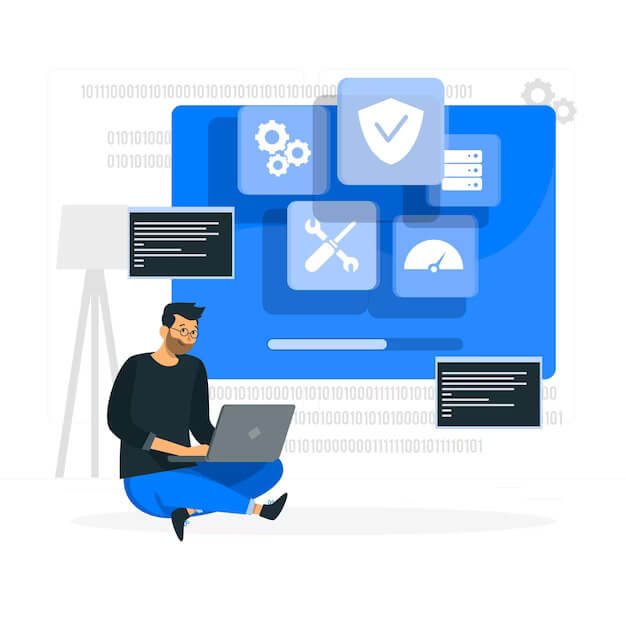
Here is an overview of software solutions across industries, showcasing their significance and specific applications within each sector.
Healthcare Industry
In the healthcare industry, software solutions play a vital role in improving patient care and streamlining operations. Electronic Health Record (EHR) systems are widely used to digitize and manage patient health records, enabling secure and efficient access to medical information.
Check our EMR and EHR Integration Services.
Hospital Management Systems provide comprehensive solutions for managing administrative tasks, scheduling appointments, tracking inventory, and streamlining billing and payment processes. In fact, Telemedicine app development solutions have gained popularity, allowing remote consultations between healthcare providers and patients.
Medical Imaging Software aids in the interpretation and analysis of medical images such as X-rays, MRI scans, and ultrasounds. Pharmacy Management Systems help streamline prescription management, inventory control, and medication dispensing processes.
Check our exclusive Healthcare Software Product Engineering Services
Banking and Financial Services
In the banking and financial services sector, software solutions are crucial for efficient and secure financial operations. As a matter of fact, Core Banking Systems form the backbone of banking institutions, handling customer accounts, transaction processing, and core banking functionalities.
Check with various types of fintech app development
In fact, Online Banking Solutions enable customers to access their accounts, perform transactions, and manage finances through web or mobile applications. Payment Processing Software facilitates secure and seamless payment transactions, supporting various payment methods and also integration with payment gateways. Wealth Management Platforms provide comprehensive tools for investment portfolio management, financial planning, and also advisory services.
Check the latest list of top trends in fintech app development
Risk Management Systems help banks and financial institutions assess and mitigate potential risks, ensuring compliance with regulations and managing fraud detection.
Talk to us for more details on our fintech app development services
Retail and E-commerce
Retail and e-commerce businesses rely on software solutions to manage their operations, enhance customer experiences, and also drive sales. To build eCommerce website or platforms that provide the infrastructure and functionality for online businesses is one of the trends today in fact to showcase and sell their products or services.
Inventory Management Systems help businesses track stock levels, manage product information, and also streamline order fulfillment processes. Point of Sale (POS) Systems enable retailers to process sales transactions, manage inventory, and generate invoices. Also, order management software helps businesses handle order processing, tracking, and fulfillment across multiple channels.
In fact, trending solutions like customer loyalty programs utilize software solutions to implement and manage loyalty programs, rewarding customers for their repeat business and promoting customer retention.
Get a free quote for eCommerce development services now!
Manufacturing and Logistics
Software solutions play a crucial role in optimizing manufacturing and logistics operations, improving efficiency, and reducing costs. As a matter of fact, Enterprise Resource Planning (ERP) Systems integrate various business processes, including inventory management, production planning, supply chain management, and customer relationship management.
Check the types, processes, and benefits of Cloud Migration services
Supply Chain Management (SCM) Software enables businesses to optimize the flow of goods and materials, manage suppliers, track inventory, and also streamline logistics operations. Warehouse Management Systems provide tools for efficient inventory tracking, storage optimization, order picking, and also shipment processing.
Get in touch for cloud migration consultancy
Product Lifecycle Management (PLM) Software facilitates collaboration and management of product development processes, in fact from conception to retirement. Quality Management Systems help ensure product quality and compliance with industry standards and also regulations through quality control and documentation.
Get in touch for industrial software development or software consulting service for your organization.
Education and E-learning
The education sector benefits from software solutions that enhance learning experiences, enable online education, and streamline administrative processes. Learning Management Systems (LMS) deliver online courses, manage course materials, track student progress, and facilitate assessments.
Check our cross-platform app development services
Virtual Classroom Platforms provide tools for interactive online classrooms, allowing real-time collaboration between students and instructors. Online Assessment Tools enable educators to create and administer online quizzes, exams, and assignments.
Get in touch for implementing Salesforce for the education cloud.
Student Information Systems centralize student data, including enrollment, attendance, grades, and academic records. Academic ERP Systems integrate various administrative functions such as admissions, scheduling, billing, and reporting, streamlining operations in educational institutions.
Travel and Hospitality
Software solutions are integral to the travel and hospitality industry, enabling efficient operations and enhancing guest experiences. Property Management Systems (PMS) are used by hotels and accommodations to manage reservations, room assignments, guest check-in/out, and billing processes. Online Reservation Systems allow travelers to book accommodations, flights, car rentals, and other travel services.
Check our Mobile app development services for travel and hospitality applications.
Tour and Travel Management Software assists travel agencies in organizing and managing tour packages, itineraries, and bookings. Hotel Channel Management Systems help optimize online distribution by managing room rates, availability, and inventory across multiple online booking channels.
Travel Expense Management Solutions automate and streamline the process of managing travel expenses, reimbursement requests, and expense reporting for both businesses and travelers.
Get in touch for hospitality software development
Real Estate and Property Management
Real estate and property management software solutions streamline operations and improve efficiency in managing properties and tenant experiences. Property Management Software centralizes property-related data, including lease agreements, maintenance requests, financials, and tenant information.
Get in touch for IoT applications development services
Real Estate CRM Systems facilitate customer relationship management for real estate professionals, managing leads, contacts, and sales processes. Vacation Rental Management Platforms assist property owners in managing vacation rental bookings, reservations, availability, and guest communication.
Facility Management Systems provide tools for maintaining and managing facilities, tracking maintenance schedules, and optimizing resource allocation. Property Listing and Search Portals aggregate property listings, allowing users to search and compare available properties based on their preferences.
Learn the details on how real estate organizations can benefit from features of Artificial intelligence technology like automated property evaluation.
AI in Software Development
Automotive Industry
The automotive industry relies on software solutions to manage sales, service, inventory, and customer relationships. Dealer Management Systems (DMS) provide comprehensive tools for managing dealership operations, including sales management, vehicle inventory, customer data, and after-sales services.
Vehicle Tracking and Fleet Management Software enable businesses to track and manage their vehicle fleets, optimizing routes, monitoring vehicle performance, and improving operational efficiency.
Get in touch for Taxi app development
Automotive CRM Systems help manage customer relationships, track sales leads, and provide personalized customer experiences. Auto Parts Inventory Management Software streamlines inventory control and supply chain management for automotive parts retailers and manufacturers. Diagnostic and Repair Software aids automotive technicians in diagnosing vehicle issues, troubleshooting, and performing repairs.
Consult with us for all your software, application development, and integration needs with our software consulting services.
Energy and Utilities
Software solutions play a vital role in managing energy generation, distribution, and consumption, as well as optimizing utility operations. Energy Management Systems help organizations monitor and manage energy usage, analyze consumption patterns, and identify opportunities for efficiency improvements.
Get in touch for software consulting services
Smart Grid Solutions leverages software to integrate renewable energy sources, enable demand response programs, and optimize grid operations. Utility Billing Software automates and streamlines billing processes for utilities, including electricity, water, and gas, ensuring accurate invoicing and efficient customer billing management.
Asset Performance Management Systems assist in monitoring and maintaining critical assets, such as power plants and pipelines, to ensure optimal performance and minimize downtime. Renewable Energy Monitoring Platforms enable real-time monitoring and analysis of renewable energy sources, including solar, wind, and hydropower generation.
Explore our enterprise mobile app development services
Government and Public Sector
Software solutions play a significant role in enabling efficient governance, citizen services, and administrative processes in the public sector. e-Government Portals provide online platforms for citizens to access government services, and information, and interact with government agencies.
Get in touch with our software product engineering team
Citizen Relationship Management Systems help government entities manage citizen interactions, complaints, and service requests, improving responsiveness and citizen satisfaction. Document Management Solutions facilitate the storage, retrieval, and management of digital documents and records, ensuring efficient documentation processes and compliance with record-keeping requirements.
Public Safety and Emergency Management Software assist in managing public safety operations, emergency response coordination, and incident reporting. Tax and Revenue Management Systems support the collection, processing, and management of taxes and revenues, ensuring accurate financial records and efficient revenue management.
Recommend reading more details on the Key Role of Software Development Services in Digital Transformation
Key Points Driving Industry Revolution With Next-Generation Solutions
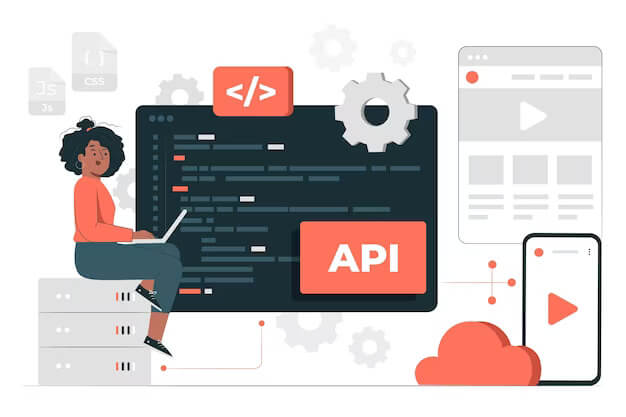
Digital Transformation
Next-generation solutions are driving the digital transformation of industries, enabling organizations to embrace advanced technologies such as artificial intelligence (AI), machine learning (ML), the Internet of Things (IoT), and big data analytics. These technologies revolutionize operations, enhance decision-making, and optimize processes across various sectors.
Enhanced Customer Experience
Next-gen solutions prioritize customer-centricity, providing personalized and seamless experiences. Industries are leveraging technologies like chatbots, virtual assistants, and customer relationship management (CRM) systems to understand customer preferences, deliver targeted offerings, and enhance customer satisfaction.
Automation and Efficiency
Automation is reshaping industries, replacing manual and repetitive tasks with intelligent software solutions. Robotic Process Automation (RPA), workflow management systems, and automated data analysis are streamlining operations, improving efficiency, and reducing costs across sectors.
Data-driven Insights
Next-gen solutions leverage data as a valuable asset, unlocking actionable insights for industries. Advanced analytics, predictive modeling, and data visualization tools enable organizations to make informed decisions, optimize processes, and identify new business opportunities.
Cybersecurity and Privacy
As industries adopt digital technologies, ensuring robust cybersecurity measures and protecting customer privacy becomes paramount. Next-generation solutions incorporate advanced security protocols, encryption techniques, and privacy frameworks to safeguard sensitive data and mitigate cybersecurity risks.
Collaboration and Connectivity
Next-gen solutions foster collaboration and connectivity within and across industries. Cloud-based platforms, collaboration tools, and unified communication systems enable seamless information sharing, real-time collaboration, and remote work capabilities, driving innovation and efficiency.
Sustainability and Green Initiatives
Industries are increasingly embracing next-gen solutions to address sustainability challenges and support green initiatives. Smart energy management systems, renewable energy solutions, and eco-friendly practices reduce environmental impact, promote sustainability, and align with evolving regulatory requirements.
Agility and Adaptability
Next-generation solutions empower industries to be agile and adaptable in rapidly changing market conditions. Cloud computing, scalable infrastructure, and agile development methodologies enable organizations to quickly respond to customer needs, launch new products, and stay ahead of the competition.
Industry-specific Solutions
Next-gen solutions are tailored to specific industry needs, catering to unique requirements and challenges. Whether it's healthcare, finance, manufacturing, retail, or any other sector, industry-specific software solutions address critical pain points, optimize processes, and drive innovation.
By embracing next-generation solutions and leveraging these key points, industries can revolutionize their operations, deliver exceptional value to customers, stay ahead of the curve, and achieve sustainable growth in today's rapidly evolving digital landscape
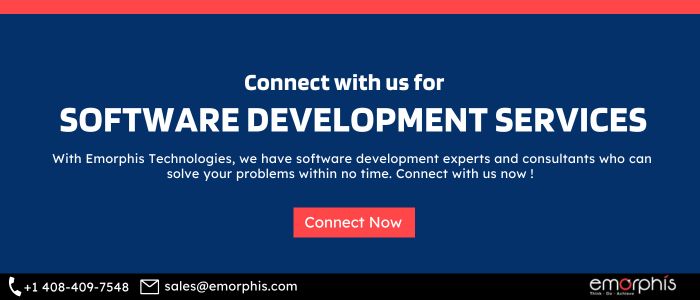
Conclusion
Overcoming software development challenges requires a comprehensive approach that addresses each aspect of the development process. Emorphis Technologies, a reputed software development company, employ various strategies and processes to tackle software development challenges such as requirements management, project management, technology selection, quality assurance and testing, security, scalability and performance, collaboration and communication, code quality, integration and compatibility, and staying up to date with technology trends. By implementing these processes, our software product engineering services team can develop, maintain and enhance solutions as per requirements. We have vast experience in delivering value and efficiency with high-quality solutions and adapting to the ever-changing landscape of software development.



